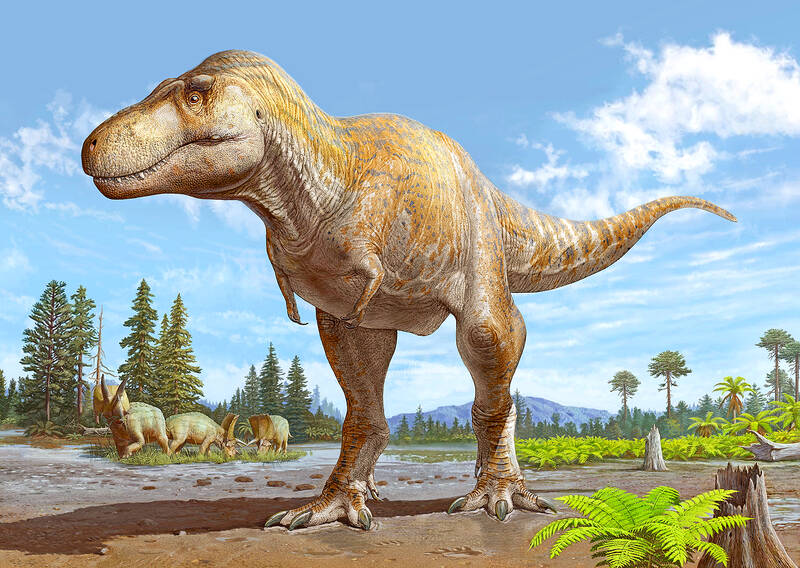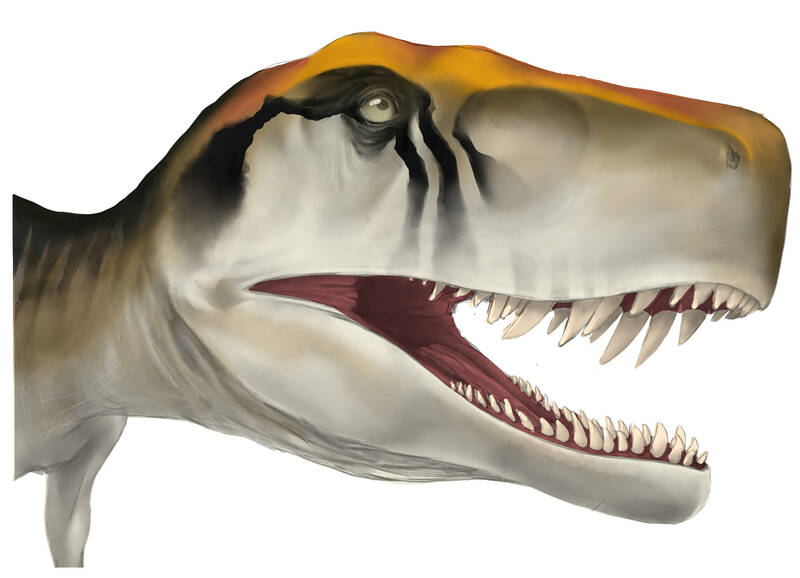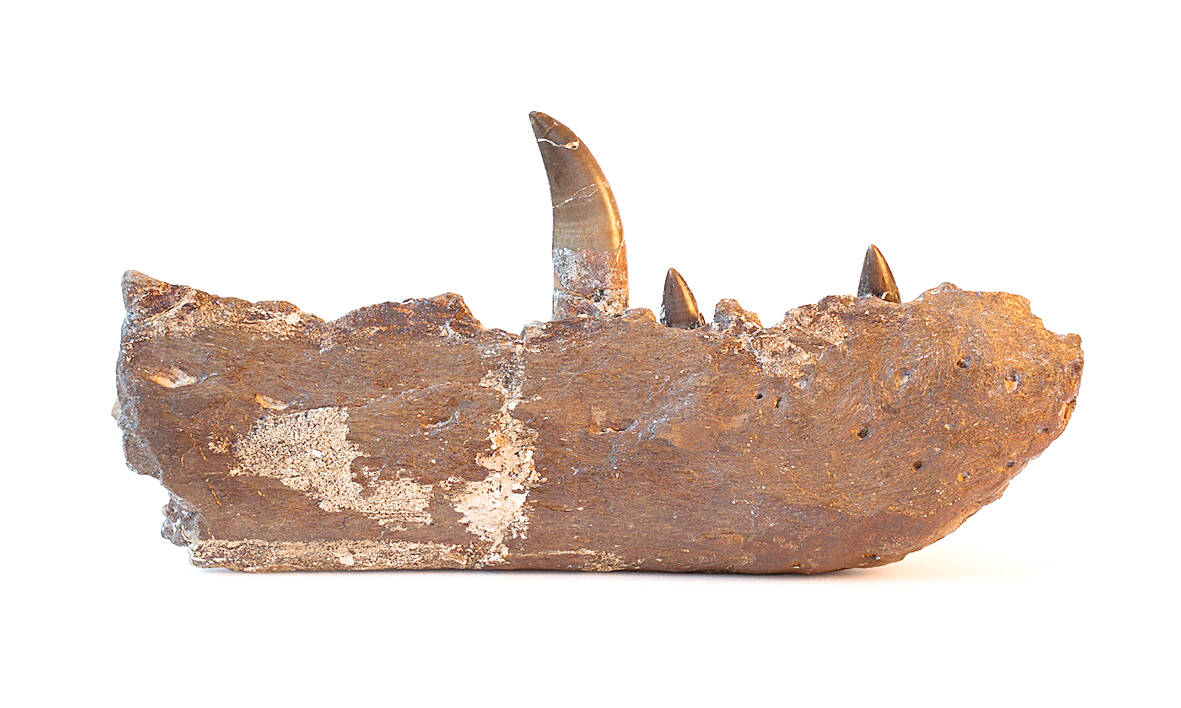One of the traits that helped make the dinosaurs such an evolutionary success story — thriving for 165 million years — was their fast growth rate, from massive meat-eaters like Tyrannosaurus to immense plant-eaters like Argentinosaurus.
But when did this characteristic first appear? A new study indicates it was present in the earliest dinosaurs, as revealed by microscopic features in bone fossils from Argentina that showed that they exhibited growth rates on par with those of today’s mammals and birds.
ADVANTAGES OF RAPID GROWTH

Photo: Sergei Krasinski via Reuters
“Growing quickly allows organisms to escape the risky business of being small for a long part of their life history. It also allows them more time to reproduce throughout their lifespan, which imparts a measure of evolutionary fitness, generation by generation,” said paleontologist Kristi Curry Rogers of Macalester College in Minnesota, lead author of the study published this month in the journal PLOS ONE.
The researchers examined patterns preserved within the bones of dinosaurs and some of their cousins that inhabited northwestern Argentina between about 231 and 229 million years ago.
“The organization of minute bone mineral crystals and proteins, along with blood vessels and cellular organization, all reflect relative speed of growth,” Curry Rogers said. “Of course, all these soft squishy parts have long since decayed, millions of years ago, when these bones were becoming fossils. But all the hard parts that persist through time record the spaces where these soft parts once were. This allows us to reconstruct and compare growth patterns among animals.”

Photo: Reuters
The researchers studied five early dinosaurs — all bipedal, fleet-footed and with clawed, grasping hands and sharp teeth.
Three were meat-eaters, forerunners of massive predators such as T rex and Giganotosaurus. Herrerasaurus and Sanjuansaurus were around 13-4.5 meters long, while Eodromaeus was about the size of a turkey.
The other two — similarly turkey-sized Eoraptor and Chromogisaurus — were forerunners of long-necked, four-legged giants such as Argentinosaurus and Dreadnoughtus.

Photo: Reuters
All five showed signs of exceptionally fast growth.
RULING REPTILES
But the researchers also got a bit of a surprise when they discovered that some of the non-dinosaur reptiles in these ancient Argentine ecosystems were keeping pace, having their own speedy growth rates.
“Dinosaurs arose from humble origins, starting off as small, bipedal carnivores, who were themselves dominated by a diverse array of other ruling reptiles,” Curry Rogers said.
Quick growth was detected in fearsome four-legged crocodile-like Saurosuchus, the dominant terrestrial predator of its time at about 7 meters long, as well as crocodile relatives Proterochampsa and Trialestes.
Other animals including tusked plant-eating reptile Hyperodapedon and mammal-like reptile Exaeretodon also grew quickly, but regularly paused their growth throughout life — a pattern distinctive from the continuous fast growth of dinosaurs.
The first dinosaurs and these other animals evolved during the Triassic Period. This was in the aftermath of Earth’s worst mass extinction 252 million years ago at the end of the Permian Period. About 95 percent of species were lost amid severe climate change apparently caused by massive Siberian volcanic activity.
“Since these dinosaurs shared their fast growth rates with a number of other animals that are distant relatives, it seems that growing fast was good for everyone in a turbulent world,” Curry Rogers said. “Fast growth, combined with so many other unique aspects of dinosaur physiology, biology and behavior likely gave dinosaurs a leg up. But it was this unique combination — not the single feature of growing up quickly — that gave dinosaurs their evolutionary jump start.”
Another mass extinction at the end of the Triassic about 201 million years ago doomed many of the early competitors to the dinosaurs, allowing the dinosaurs to assert true dominance.
“As time would continue to unroll, the dinosaurs would hold onto these elevated growth rates, while their non-dinosaur compatriots would slow things down,” Curry Rogers said. “These changes accompany major shifts in diversity through this time. As dinosaurs become more disparate, their crocodile-cousins get canalized into a much narrower range of growth patterns and lifestyle.”

On April 26, The Lancet published a letter from two doctors at Taichung-based China Medical University Hospital (CMUH) warning that “Taiwan’s Health Care System is on the Brink of Collapse.” The authors said that “Years of policy inaction and mismanagement of resources have led to the National Health Insurance system operating under unsustainable conditions.” The pushback was immediate. Errors in the paper were quickly identified and publicized, to discredit the authors (the hospital apologized). CNA reported that CMUH said the letter described Taiwan in 2021 as having 62 nurses per 10,000 people, when the correct number was 78 nurses per 10,000

As we live longer, our risk of cognitive impairment is increasing. How can we delay the onset of symptoms? Do we have to give up every indulgence or can small changes make a difference? We asked neurologists for tips on how to keep our brains healthy for life. TAKE CARE OF YOUR HEALTH “All of the sensible things that apply to bodily health apply to brain health,” says Suzanne O’Sullivan, a consultant in neurology at the National Hospital for Neurology and Neurosurgery in London, and the author of The Age of Diagnosis. “When you’re 20, you can get away with absolute

May 5 to May 11 What started out as friction between Taiwanese students at Taichung First High School and a Japanese head cook escalated dramatically over the first two weeks of May 1927. It began on April 30 when the cook’s wife knew that lotus starch used in that night’s dinner had rat feces in it, but failed to inform staff until the meal was already prepared. The students believed that her silence was intentional, and filed a complaint. The school’s Japanese administrators sided with the cook’s family, dismissing the students as troublemakers and clamping down on their freedoms — with

As Donald Trump’s executive order in March led to the shuttering of Voice of America (VOA) — the global broadcaster whose roots date back to the fight against Nazi propaganda — he quickly attracted support from figures not used to aligning themselves with any US administration. Trump had ordered the US Agency for Global Media, the federal agency that funds VOA and other groups promoting independent journalism overseas, to be “eliminated to the maximum extent consistent with applicable law.” The decision suddenly halted programming in 49 languages to more than 425 million people. In Moscow, Margarita Simonyan, the hardline editor-in-chief of the